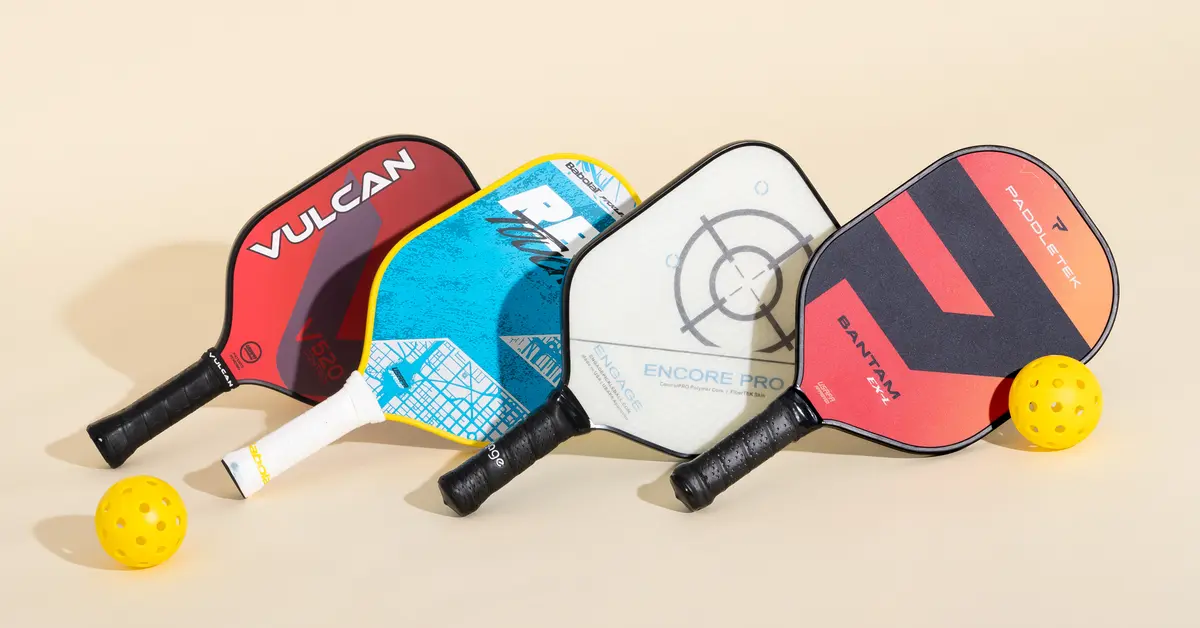Pickleball is one of the fastest-growing sports, attracting players of all ages and skill levels. Whether you’re a beginner just getting into the game or an experienced player looking to upgrade your gear, selecting the right pickleball racket is crucial for enhancing your performance and overall enjoyment on the court. In this guide, we’ll explore the key factors to consider when choosing the best pickleball racket for your playing style.
Understanding Racket Materials
The material of a pickleball racket significantly influences its weight, durability, and overall performance. Most pickleball rackets are made from one of three main materials: wood, composite, or graphite.
- Wood Rackets: Wood rackets are typically the heaviest and most affordable option. While they offer durability and a traditional feel, they may lack the advanced features that more experienced players desire. These rackets are generally best suited for beginners or casual players who are just starting to learn the game.
- Composite Rackets: Composite rackets are made from a combination of materials, such as fiberglass, polymer, and aluminum. These rackets are lighter than wood and provide better control and power. The surface of composite rackets often includes a textured finish, which can enhance spin and accuracy. They are a popular choice for intermediate players looking to improve their game.
- Graphite Rackets: Graphite rackets are the lightest and most advanced option. They offer excellent control, power, and maneuverability, making them ideal for serious players who want to take their game to the next level. The lightweight nature of graphite rackets allows for quick reactions and precise shots, which can be a significant advantage during fast-paced games.
Racket Weight and Balance
The weight of your pickleball racket plays a crucial role in how it feels in your hand and how it performs on the court. Pickleball rackets generally range from 6 to 14 ounces, and selecting the right weight depends on your strength, playing style, and personal preference.
- Lightweight Rackets (6-7.5 ounces): Lightweight rackets are easier to maneuver and allow for quicker reactions at the net. They are an excellent choice for players who rely on speed and agility. However, they may require more effort to generate power on shots, which could be a drawback for some players.
- Midweight Rackets (7.5-8.5 ounces): Midweight rackets offer a balance between control and power, making them a versatile option for most players. They provide enough weight to deliver strong shots while still being manageable for quick volleys and defensive play.
- Heavyweight Rackets (8.5-14 ounces): Heavyweight rackets deliver more power with less effort, making them suitable for players who prefer a more forceful game. However, they can be harder to maneuver, especially during fast exchanges at the net. These rackets are often favored by players with a more aggressive playing style.
In addition to weight, the balance of the racket—whether it is head-heavy, head-light, or evenly balanced—can affect your play. Head-heavy rackets provide more power but may be harder to control, while head-light rackets offer better control and maneuverability at the expense of power.
Grip Size and Comfort
Choosing the right grip size is essential for maintaining control and preventing injury. The grip size refers to the circumference of the racket handle, and selecting the correct size depends on the size of your hand.
- Small Grip (4 to 4.25 inches): A smaller grip allows for more wrist action, which can enhance spin and control. It’s ideal for players with smaller hands or those who prefer a looser grip.
- Medium Grip (4.25 to 4.5 inches): This grip size is the most common and suits a wide range of players. It offers a balance of control and comfort, making it a good choice for most players.
- Large Grip (4.5 inches and above): A larger grip provides more stability and is better for players with larger hands or those who prefer a firmer grip. However, it may limit wrist movement, reducing the ability to generate spin.
It’s important to choose a grip size that feels comfortable in your hand. An improper grip size can lead to discomfort, reduced control, and even injury over time.
Face Texture and Core Construction
The texture of the racket face can influence how much spin you can generate, while the core construction affects the feel and power of your shots.
- Textured Faces: Rackets with a textured surface are designed to enhance spin, allowing you to put more spin on the ball for greater control. This feature is particularly useful for advanced players who rely on spin to outmaneuver their opponents.
- Core Materials: The core of the racket is typically made from materials like polymer, aluminum, or Nomex. Polymer cores offer a softer feel and are quieter, making them a popular choice for recreational play. Aluminum cores are known for their durability and power, while Nomex cores provide a firmer feel and more responsive feedback.
Conclusion
Selecting the best pickleball racket involves considering various factors, including material, weight, balance, grip size, and core construction. By understanding how these elements affect your performance, you can choose a racket that complements your playing style and enhances your game.
For players looking to elevate their skills, Liquida Sport pickleball rackets offer a range of options designed to meet the needs of both recreational and competitive players.


Understanding the Cost of Hiring an FDA Expert
Hiring an FDA expert is a strategic investment for any company navigating the complex landscape of FDA regulations. However, understanding the costs involved is crucial for budgeting and ensuring that you receive the maximum return on your investment. Here’s a breakdown of what you need to know about the cost of hiring an FDA Expert […]